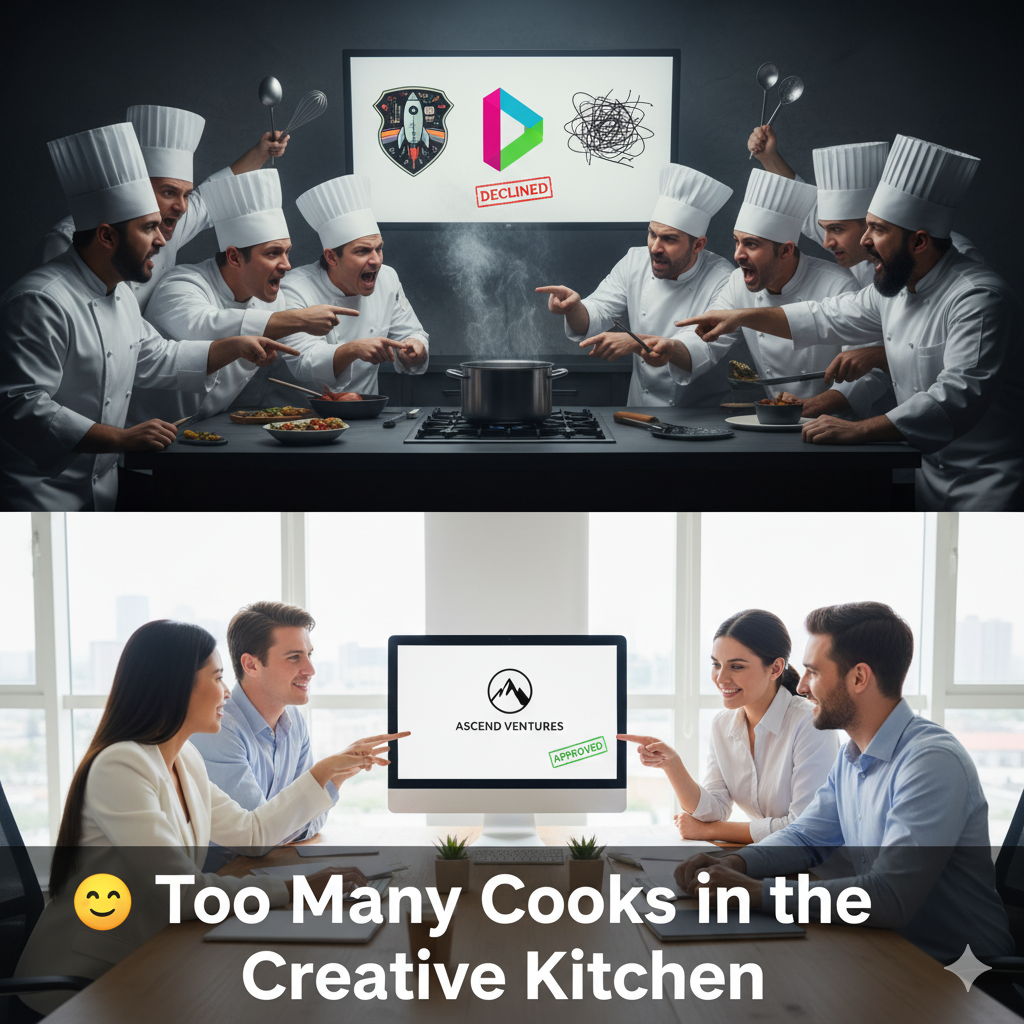🧑🍳 Too Many Cooks in the Creative Kitchen: How to Save Your Next Design Project
The old saying, "Too many cooks in the kitchen spoil the broth," isn't just about culinary disasters—it’s a perfect metaphor for what happens when a critical project lacks a clear, singular decision-maker. This issue is a silent project killer, and in the world of creative services, it's particularly potent.
As a design agency, our goal is clear: to capture your audience, build a memorable logo, and develop a brand that will grow and elevate your business. Unfortunately, when the kitchen is overflowing with opinions, the result is often a diluted, uninspired mess.

❌ The Anatomy of a Project Gridlock
We recently faced this scenario with a client looking to launch a new business. Our standard process for logo and brand development is structured for efficiency: we provide three initial concepts, and then we work with one lead person to refine the single version that best fits the business’s overarching vision.
We always preface our kick-off meeting by explaining that having a Single Point of Contact (SPOC) is the best, most efficient path forward.
What actually happened? The client invited multiple stakeholders—each with their own title, preferences, and internal agenda—to the review call for the three logo versions.
Instantly, the meeting stalled. One person loved the font of version A but the color of version C. Another insisted on a symbol that our research showed wouldn't resonate with their target market. The feedback wasn't consolidated; it was conflicting, contradictory, and served no unified purpose. When you have too many voices dictating the final look, the choices become not just difficult, but paralyzing. The project grinds to a halt.
🧐 Why "Design by Committee" Fails
In a creative project, success hinges on a clear, singular vision. When that vision is filtered through five or six different internal perspectives, it doesn't get better—it gets compromised. This is what we call Design by Committee, and it leads to several damaging outcomes:
Diluted Vision
A truly effective logo is bold and focused. Consensus design often strips away the unique edge, resulting in a bland, inoffensive mark that fails to stand out or appeal to the target audience.
Wasted Time and Budget
Every conflicting opinion requires clarification, internal discussion, and often, an unnecessary round of revisions. This chews up valuable time, pushes deadlines, and drains the project budget.
Erosion of Trust
When the agency's professional recommendation is undermined by a chorus of internal non-experts, it erodes the relationship and makes delivering a high-quality product exponentially harder.
✅ How to Prevent Too Many Cooks: A "How-To" Guide
Avoiding this costly trap requires clear boundaries and a commitment to structure from both the client and the agency.
For the Agency - Set Clear Expectations Early
Make SPOC Non-Negotiable
Formalize the requirement for a Single Point of Contact (SPOC) in your initial contract or proposal. This person must be explicitly granted final sign-off authority.
Define the Review Process
Explain how feedback should be delivered. Emphasize that you expect one consolidated set of notes, not a stream of consciousness from multiple people.
Educate the Client
Proactively explain why this structure works. Highlight that having one Lead Decision-Maker is the fastest path to a focused, memorable, and successful brand.
For the Client - Appoint a Single, Empowered Leader
Choose Your Champion
Select one person—your Lead Decision-Maker—who truly understands the business objectives, the target audience, and the scope of the project. This person is the final authority.
Consolidate Internally
Encourage your team to provide their feedback to your SPOC privately, before the review meeting. The SPOC should then synthesize those notes into one unified direction to present to the agency.
Trust the Process
You hired the agency for their creative expertise. Empower your SPOC to trust their professional recommendation and focus the discussion on alignment with business goals, not personal preferences.






